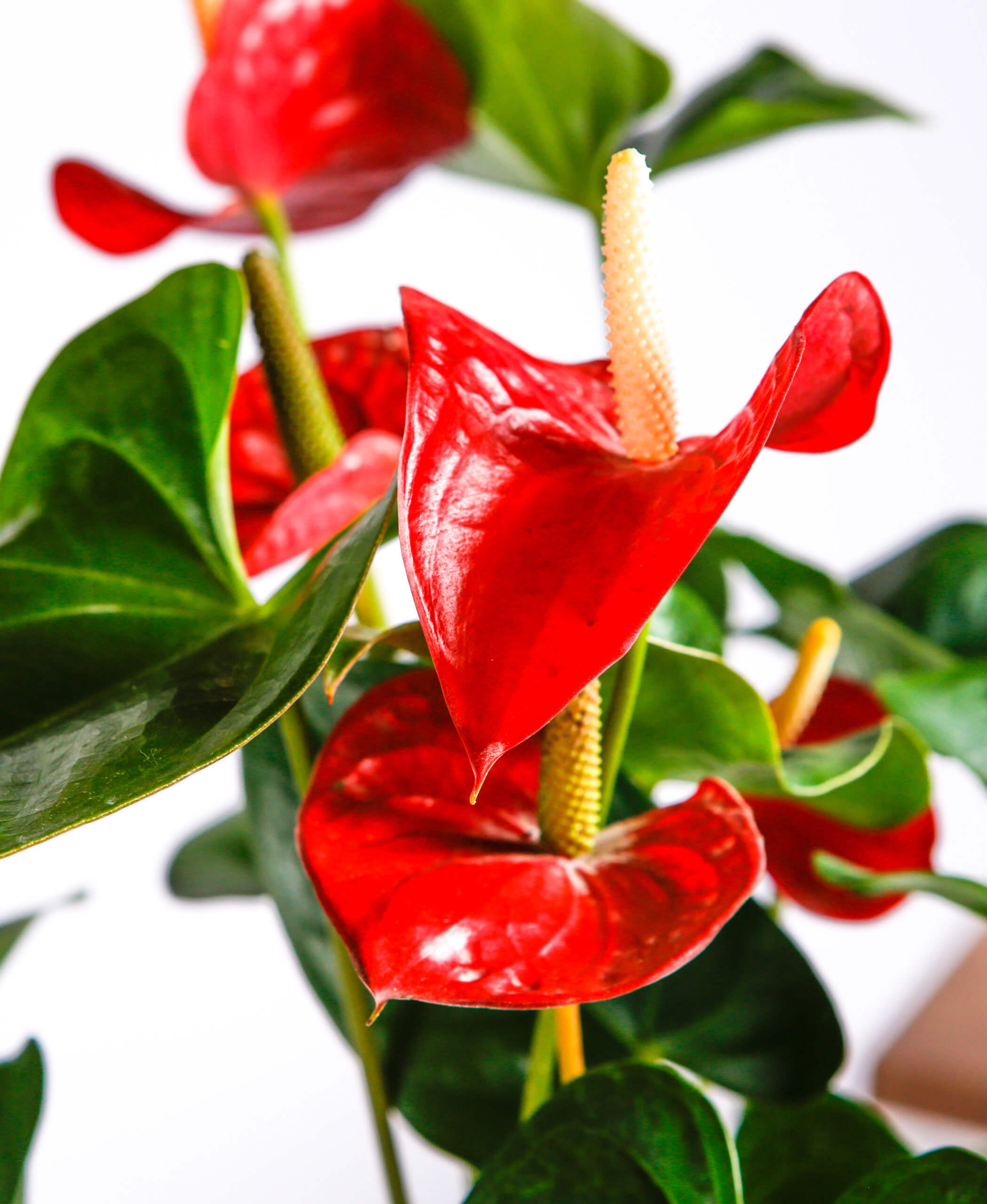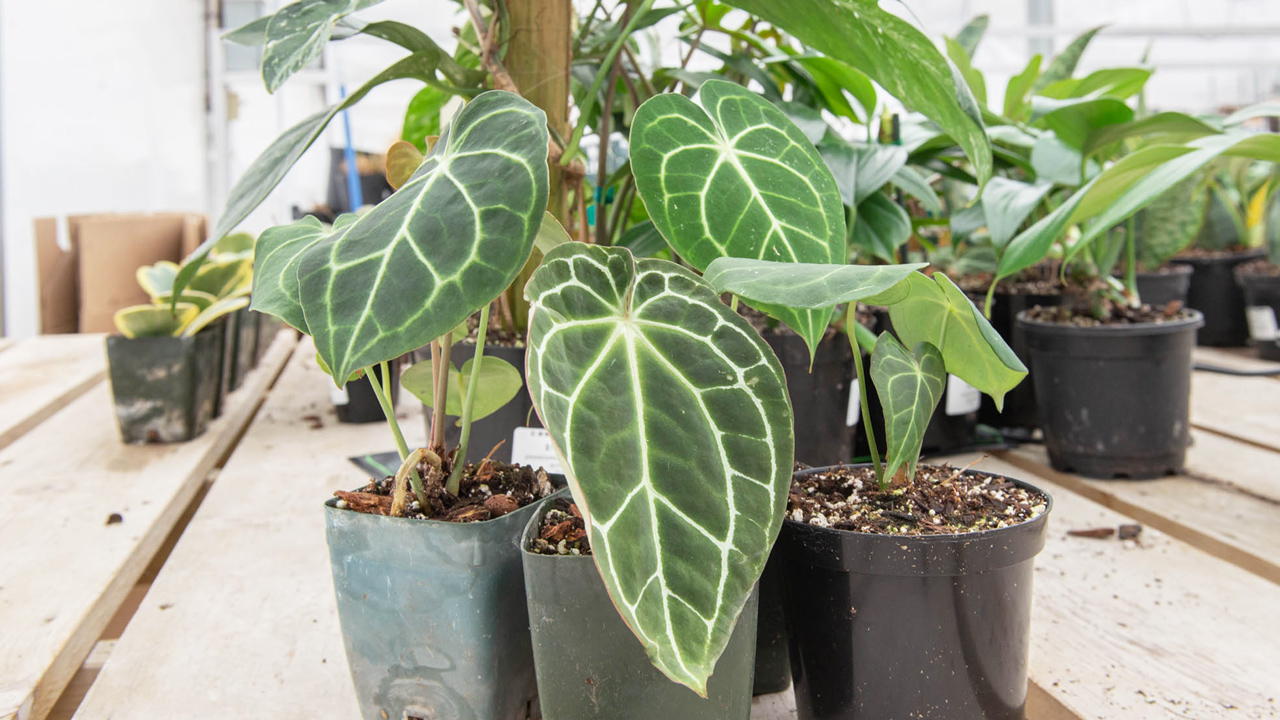The Stunning World of Anthurium: More Than Just a Pretty Bloom
Anthuriums. Just the name sounds a little exotic, doesn’t it? And honestly, these plants live up to that reputation. Often called “flamingo flowers” or “laceleaf,” they’re those eye-catching beauties you’ve probably seen with their glossy, heart-shaped “flowers” that come in vibrant shades like red, pink, white, and even green or purple. But hold on a second – what we usually think of as the flower isn’t actually a flower at all! It’s a modified leaf called a spathe. The real flowers are those tiny bumps you see on the spadix, that little spike sticking out from the center of the spathe. Pretty cool, huh?
A Plant with Roots in the Tropics
These gorgeous plants hail from the tropical rainforests of Central and South America. Imagine steamy, humid environments with dappled sunlight filtering through the dense canopy. That’s where Anthuriums thrive in the wild, often growing as epiphytes, meaning they attach themselves to other plants like trees for support rather than growing in the soil. This jungle heritage gives us some important clues about how to care for them indoors.

Why Everyone Loves Anthuriums
So, what’s the big deal about Anthuriums? Well, for starters, they’re undeniably striking. That vibrant spathe adds a pop of color and a touch of elegance to any space. They’re also relatively long-lasting as houseplants, with their “flowers” often sticking around for weeks or even months. Plus, there are tons of different varieties, with different spathe shapes, sizes, and colors, so there’s an Anthurium out there for pretty much everyone’s taste. Some even have beautifully textured or patterned leaves, adding another layer of visual interest.
Bringing the Tropics Indoors: Anthurium Care Basics
Thinking of adding an Anthurium to your plant collection? Here’s the lowdown on keeping them happy:
Light: Bright but Indirect is Key
Remember their rainforest home? They get sunlight, but it’s filtered through the leaves above. Indoors, aim for bright, indirect light. An east-facing window is often ideal, or a spot near a south or west-facing window but away from direct sunbeams, which can scorch their delicate leaves.
Watering: Finding the Right Balance
Overwatering is a common pitfall with Anthuriums. Their epiphytic roots don’t like to sit in soggy soil. Allow the top inch or two of the potting mix to dry out before watering thoroughly. Make sure your pot has good drainage so excess water can escape. In the winter months, when the plant’s growth slows down, you’ll need to water less frequently.

Humidity: They Love a Bit of Moisture in the Air
Coming from humid rainforests, Anthuriums appreciate higher humidity levels. If your home is on the drier side, especially during winter with indoor heating, consider ways to boost humidity. You can use a humidifier, place the pot on a pebble tray filled with water (making sure the bottom of the pot isn’t sitting directly in the water), or mist the plant occasionally.
Temperature: Keep it Consistent and Cozy
Anthuriums generally prefer temperatures between 65-80°F (18-27°C). Avoid placing them near drafts or extreme temperature fluctuations.
Soil: Well-Draining is a Must
A well-draining potting mix is crucial for Anthuriums. A mix formulated for orchids or a blend of potting soil, perlite, and orchid bark works well to provide the aeration their roots need.
Feeding: A Little Goes a Long Way
During the growing season (spring and summer), you can feed your Anthurium with a balanced liquid fertilizer diluted to half strength every 2-4 weeks. Hold off on fertilizing during the fall and winter when the plant is resting.
Common Anthurium Issues to Watch Out For
Even with the best care, you might encounter a few common issues:
Yellowing Leaves: Often a sign of overwatering or insufficient light. Check your watering habits and the plant’s location.
Brown Leaf Tips: Can indicate low humidity or inconsistent watering.
Lack of “Flowers”: Could be due to insufficient light or a lack of nutrients. Make sure your plant is getting enough bright, indirect light and consider a light feeding during the growing season.
Pests: Keep an eye out for common houseplant pests like spider mites, mealybugs, and aphids. Address any infestations promptly with insecticidal soap or neem oil.
Propagating Your Anthurium: Sharing the Love
Want to make more Anthuriums? The most common method of propagation is division, which is usually done when repotting. Carefully separate the plant into smaller sections, ensuring each division has healthy roots and at least one growth point. You can also propagate some varieties from stem cuttings, but this can be a bit trickier.
In Conclusion: The Allure of the Anthurium
Anthuriums are more than just pretty faces; they’re captivating plants with a rich tropical heritage that can bring a touch of exotic beauty to your home. While they have specific care needs, understanding their origins and providing the right conditions will reward you with their stunning, long-lasting “flowers” and lush foliage. They’re a fantastic choice for plant lovers looking for something a little different and undeniably stylish.
Frequently Asked Questions About Anthuriums
Are Anthuriums difficult to care for?
While they have specific needs like bright, indirect light and consistent humidity, Anthuriums aren’t considered overly difficult. With a little attention to their watering and environment, they can thrive indoors.
How long do Anthurium “flowers” last?
One of the great things about Anthuriums is that their spathes (the colorful, flower-like structures) can last for several weeks, sometimes even a couple of months, providing long-lasting beauty.
Are Anthuriums safe for pets?
Unfortunately, Anthuriums are considered toxic to cats and dogs if ingested. They contain calcium oxalate crystals that can cause irritation to the mouth, throat, and stomach. It’s best to keep them out of reach of your furry friends.
Why isn’t my Anthurium flowering?
Several factors can prevent an Anthurium from flowering, including insufficient light, lack of nutrients, or being root-bound. Ensure your plant is getting bright, indirect light and consider feeding it during the growing season. Repotting into a slightly larger container if the roots are crowded can also help.
Can Anthuriums grow in low light?
Anthurium Plant
